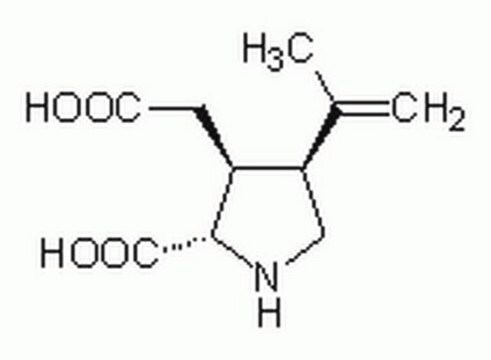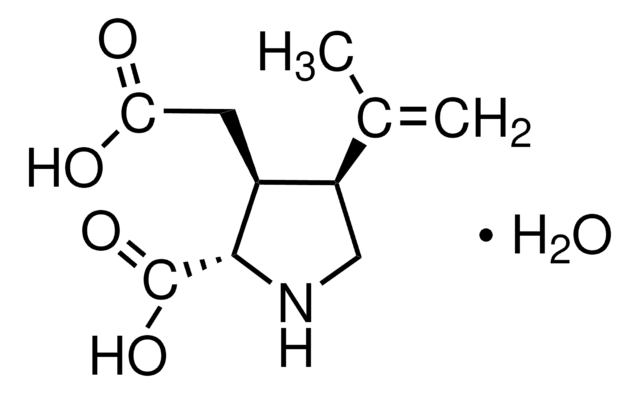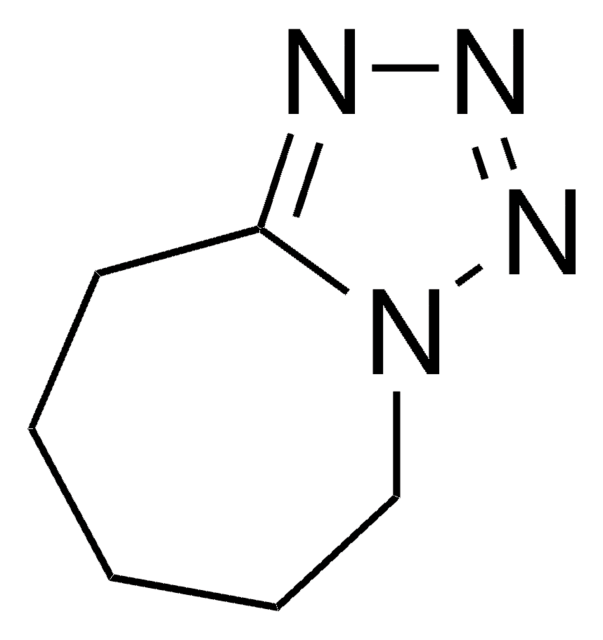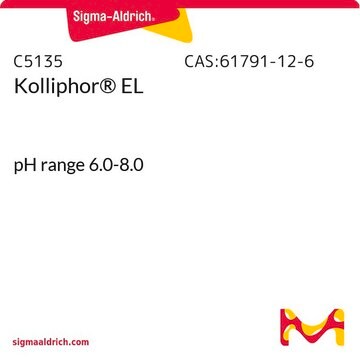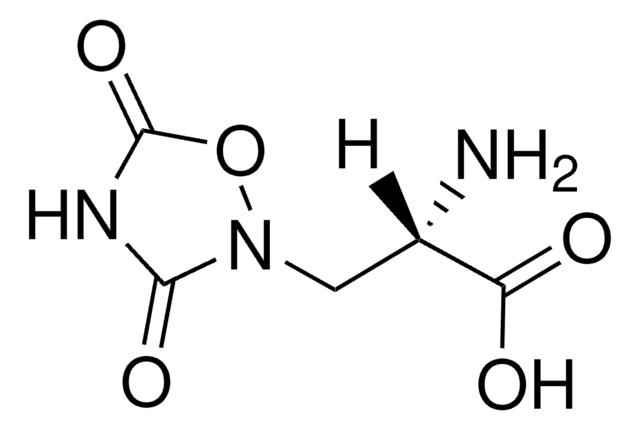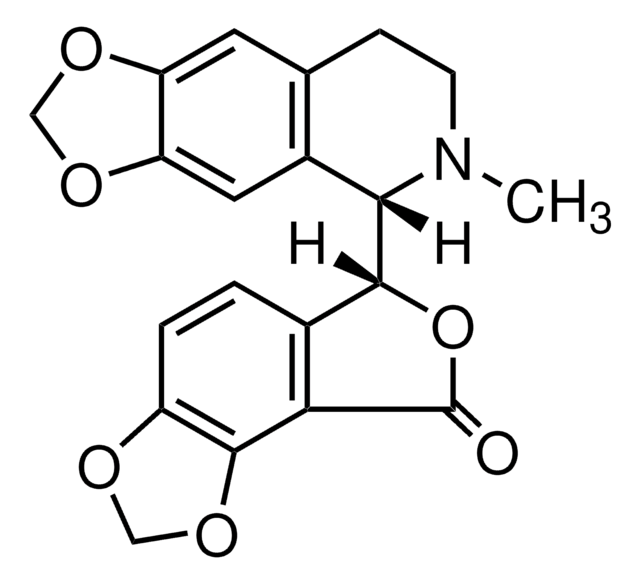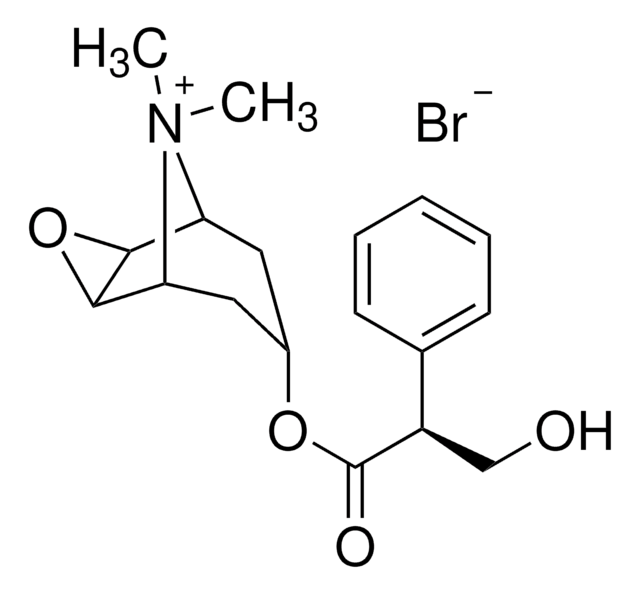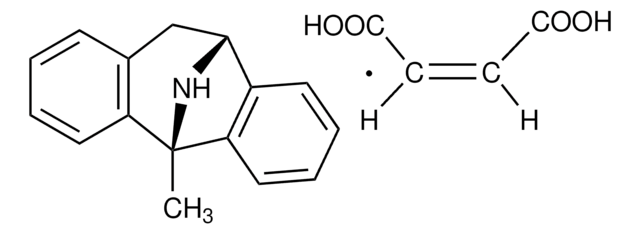K0250
Kainic acid monohydrate
≥99% (TLC), powder, ionotropic glutamate receptor (kainate class) agonist
Synonym(s):
Digenin, Kainate, 2-Carboxy-3-carboxymethyl-4-isopropenylpyrrolidine
About This Item
Recommended Products
product name
Kainic acid monohydrate, ≥99% (TLC)
Assay
≥99% (TLC)
form
powder
impurities
Glutamate, free
solubility
H2O: soluble
storage temp.
2-8°C
SMILES string
O.CC(=C)[C@H]1CN[C@@H]([C@H]1CC(O)=O)C(O)=O
InChI
1S/C10H15NO4.H2O/c1-5(2)7-4-11-9(10(14)15)6(7)3-8(12)13;/h6-7,9,11H,1,3-4H2,2H3,(H,12,13)(H,14,15);1H2/t6-,7+,9-;/m0./s1
InChI key
FZNZRJRSYLQHLT-SLGZUKMRSA-N
Gene Information
human ... GRIA1(2890) , GRIA2(2891) , GRIA4(2893) , GRIK1(2897) , GRIK2(2898) , GRIK3(2899) , GRIK4(2900) , GRIK5(2901) , SLC1A1(6505) , SLC1A2(6506) , SLC1A3(6507)
mouse ... Gria1(14799)
rat ... Gria1(50592) , Grik1(29559) , Grik4(24406) , Grin2a(24409)
Looking for similar products? Visit Product Comparison Guide
General description
Application
- tostudy mechanisms of excitation-induced apoptosis and epilepsy.
- to hamper themitochondrial function ()
- used to induce c-fosexpression in the mice′s brains, specifically targeting the dorsal hippocampus.()
Biochem/physiol Actions
Features and Benefits
Preparation Note
related product
Storage Class Code
11 - Combustible Solids
WGK
WGK 3
Flash Point(F)
Not applicable
Flash Point(C)
Not applicable
Personal Protective Equipment
Certificates of Analysis (COA)
Search for Certificates of Analysis (COA) by entering the products Lot/Batch Number. Lot and Batch Numbers can be found on a product’s label following the words ‘Lot’ or ‘Batch’.
Already Own This Product?
Find documentation for the products that you have recently purchased in the Document Library.
Customers Also Viewed
Articles
DISCOVER Bioactive Small Molecules for Neuroscience
Our team of scientists has experience in all areas of research including Life Science, Material Science, Chemical Synthesis, Chromatography, Analytical and many others.
Contact Technical Service